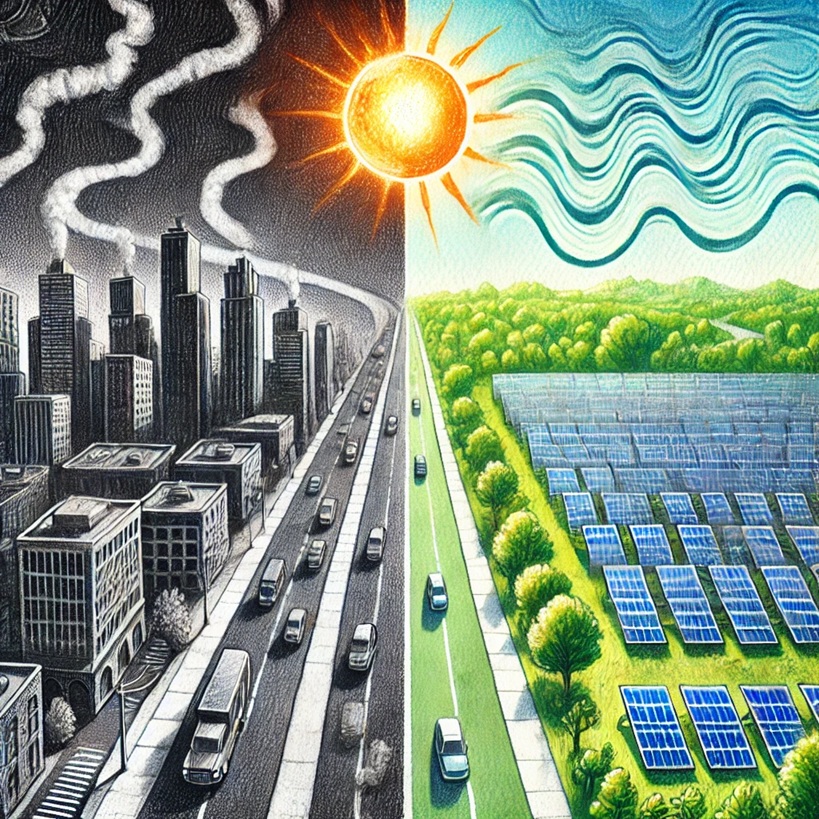|
|
|
Happy Friday!
March 14, 2025
|
|
|
|
This week our team visited more than a few counties, attending a board meeting at Prince Edward County along our way for
Clean Energy the Right Way.
|
|
|
|
|
|
Heat Shimmer or Cold Facts? Debunking the Solar Heat Island Myth
|
 |
|
|
|
In our travels at Energy Right, we’ve seen so many different communities—each one with their own unique geography and needs that go with it. Many counties in the Commonwealth express different concerns or wants surrounding solar, but every now and then, we hear concerns that stem from dated myths. One that came up recently was about whether solar panels contribute to the heat island effect, a phenomenon where surfaces absorb and retain heat, increasing local air temperatures. Scientific analysis, however, suggests that large-scale solar projects do not significantly contribute to this effect. Unlike dark, impervious surfaces such as asphalt and concrete which absorb and trap heat, solar panels are specifically designed to convert sunlight into electricity rather than store heat.
Large solar farms are typically built in open, rural areas rather than dense urban environments, where heat island effects are most pronounced (due to the large swaths of asphalt and concrete). Additionally, when installed on rooftops, solar panels provide an insulating effect, reducing heat absorption by buildings and lowering cooling demands. Studies have shown that buildings with solar panels experience lower rooftop temperatures compared to those without, further dispelling the misconception that solar panels contribute to warming. Moreover, solar farm designs often incorporate spacing that allows for airflow, mitigating any potential localized heat retention.
The assertion that solar panels create heat islands is largely based on misinterpretation of localized temperature readings. While solar panels do absorb sunlight, a significant portion of that energy is converted into electricity rather than retained as heat. In contrast, traditional urban materials such as black rooftops and pavement retain far more heat. Expanding solar adoption can actually help mitigate urban heat island effects by reducing dependence on fossil fuel power plants, which generate substantial heat and greenhouse gas emissions.
The more you know!
|
|
|
|
|
|
|
|
|
|
|
|
Records Break as the Grid Expands with Solar
|
|
|
|
|
Last year marked a turning point for solar energy in the U.S., with a record-breaking 50 gigawatts of new solar capacity added to the grid—more than any other energy source. Solar accounted for over 80% of all new electricity generation, demonstrating its growing role in America’s energy landscape. From large-scale solar farms to residential rooftop installations, the rapid expansion of solar power underscores its increasing affordability, reliability, and importance in meeting the country’s energy needs.
This momentum shows no signs of slowing, with another 26 GW expected to come online in 2025 and even greater expansion forecast for 2026. Virginia, currently ranked 8th in the nation for cumulative solar capacity, faces rising energy demands driven by economic growth and increased electricity consumption. To maintain grid reliability while keeping costs low for consumers, Virginia must continue integrating a diverse mix of energy resources—including solar—as part of a balanced approach to long-term energy planning.
Achieving true American energy independence requires market-driven policies that support efficient, cost-effective energy solutions. Solar power, with its scalability and economic benefits, is at the forefront of this shift. By fostering smart policies that encourage innovation, streamline permitting, and invest in energy infrastructure, Virginia and the nation can ensure a reliable, resilient energy future—one where solar plays a leading role.
|
|
|
|
|
|
|
|
|
|
|
|
This week our team went to Brunswick, Lunenburg, Prince Edward, and York counties.
|
|
|
|
|
|
|
 |
|
Prince Edward Board of Supervisors
|
|
|
|
A Board of Supervisors meeting in Prince Edward County attended by Energy Right—of the topics discussed, concerns and questions on solar energy came up. An important part of our mission is to better inform communities on the dynamics clean energy initiatives bring.
|
|
|
|
|
|
|
|
REPORT: Solar Adds More New Capacity to the Grid in 2024 Than Any Energy Technology in the Past Two Decades
By SEIA
|
|
The U.S. solar industry experienced a historic year in 2024, installing a record-breaking 50 GW of new solar capacity—the largest single-year addition by any energy source in over two decades. Solar and storage accounted for 84% of all new electricity generation, reflecting their growing role in meeting national energy demands. Additionally, U.S. solar manufacturing saw a major boost, with domestic module production tripling and solar cell manufacturing resuming, reinforcing America’s clean energy supply chain.
Looking ahead, total U.S. solar capacity is projected to reach 739 GW by 2035, but policy uncertainty could disrupt this trajectory. The report warns that changes to tax credits, supply chain disruptions, or permitting hurdles could reduce deployment by 130 GW over the next decade, potentially jeopardizing $250 billion in investment. Despite these challenges, solar remains the fastest-growing energy source, and the industry is poised for continued expansion.
|
|
|
|
|
|
|
|
|
|
NEXT WEEK
We’ll be going to Brunswick, Franklin, Mecklenburg, Scott, and Washington counties!
|
|
|
|
|
|
|
|
|
|
“The solar industry has invested more than $7 Billion in Virginia and employs nearly 5-thousand workers, that according to the Solar Energy Industries Association. As WFIR’s Denise Allen Membreno reports our state is in the top 10 nationally in solar capacity.”
Listen to the short news segment in the link above!
|
|
|
|
|
|
|

